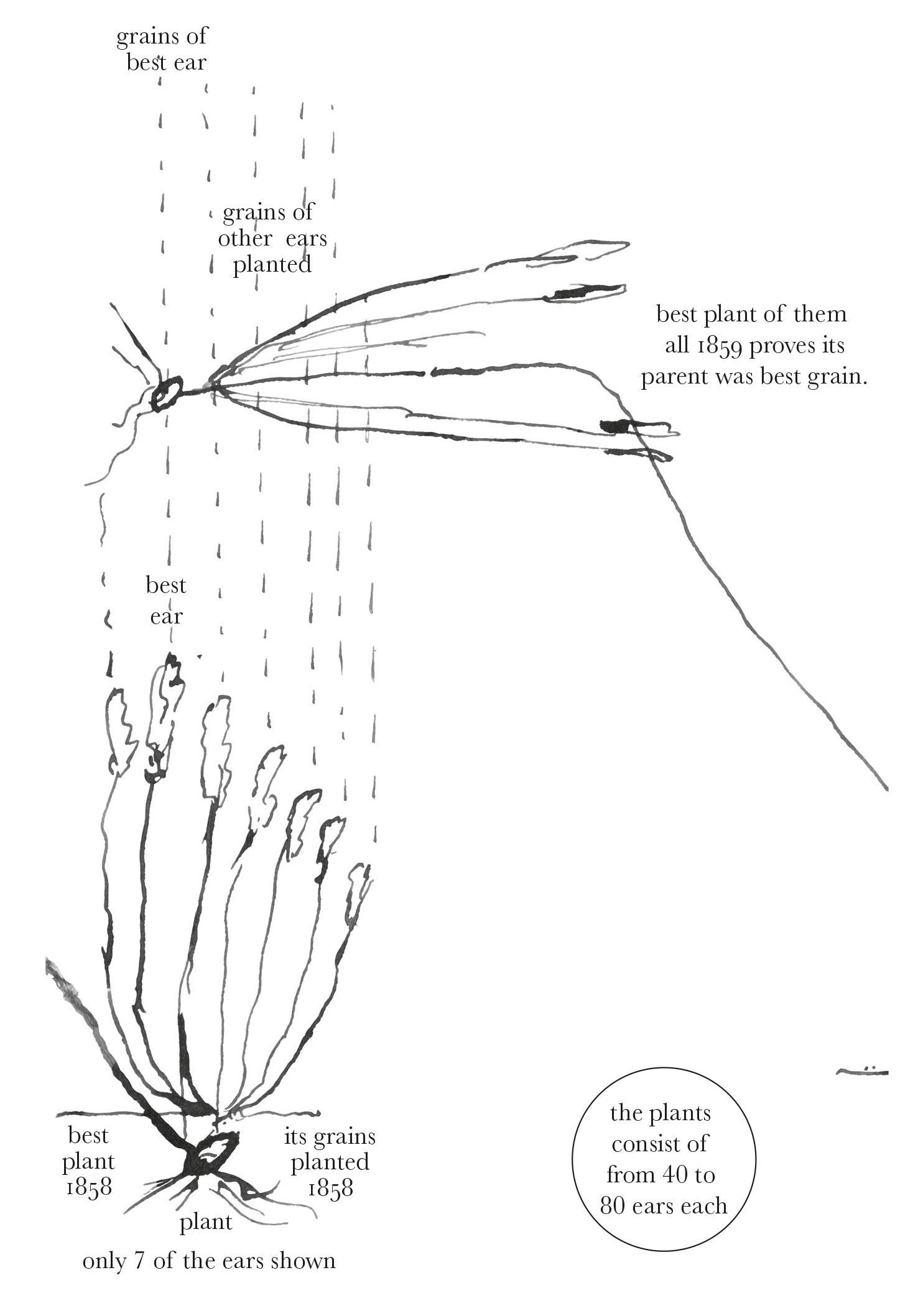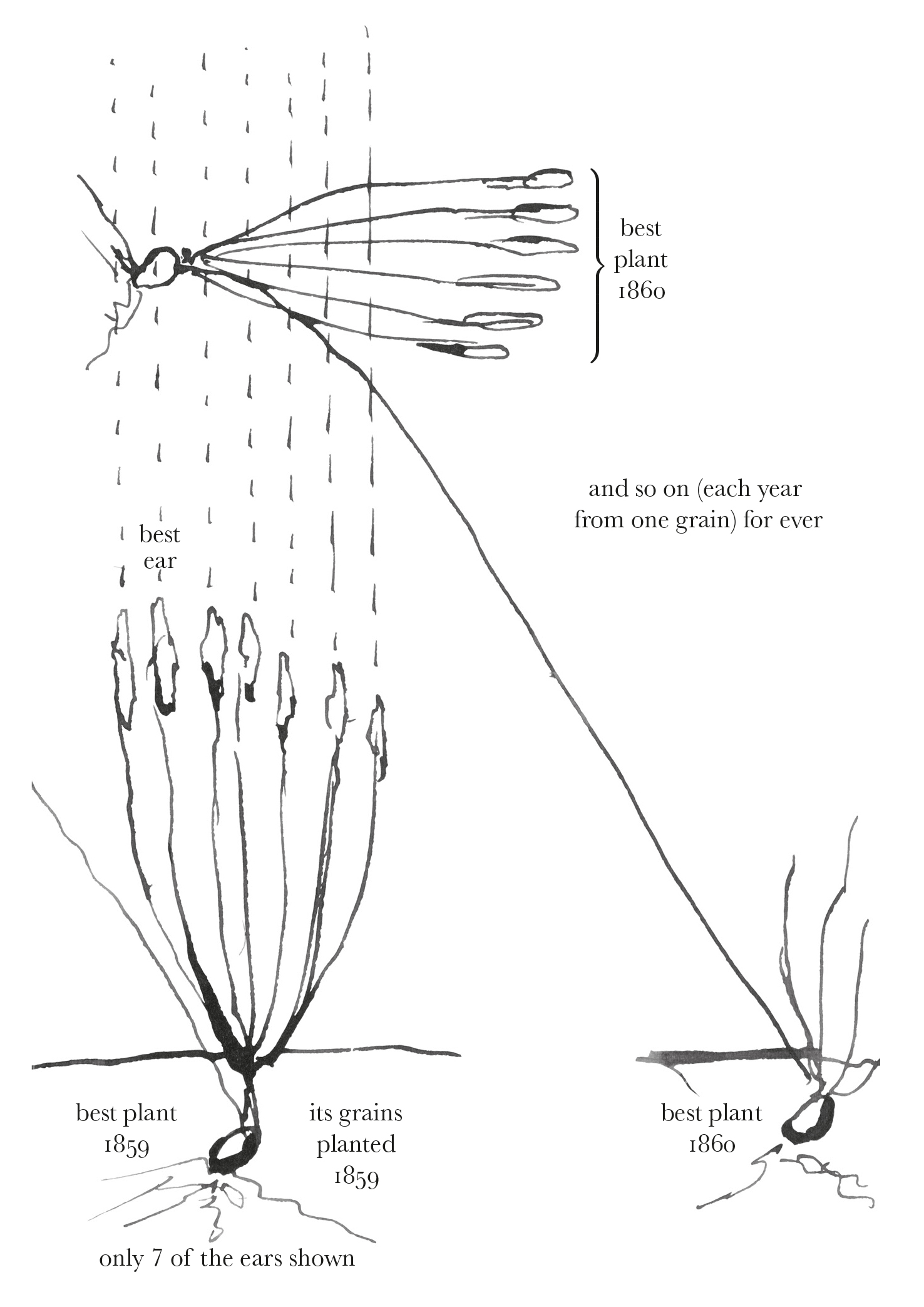From F. F. Hallett 21 May 1875
The Manor House, | Kemp Town. | Brighton
21 May 1875
Dear Sir
I am much obliged by your courteous letter but beg to be allowed to point out that the passages you quote from Le Couteur make no reference to the difference of grains from the same ear.1 In these very passages he also distinctly states that his object (of obtaining a pure stock) can be attained equally by starting from either single grains or single ears.
At page 17 he speaks of afterwards sowing “only the produce of the most productive” but it relates to the Comparative productiveness of different sorts, not of different plants of the same variety.2
At foot of same page he begins his accounts of his trial of 14 sorts against each other one ear of each.
In your important Work you say that “he found the grains of the same ear differed so that he was obliged to select them separately and each grain transmitted its own character”. and go on to say “The great amount of variability in the plants of the same variety is another interesting principle”3 If you turn to pages 12 and 14 you will see that the ears he collected as of one variety were so merely in appearance, as he afterwards proved.4
Before one can speak of variation of a variety there must be a standard from which to vary—and strictly speaking there was no such safe standard until I established my pedigree cereals—Col le Couteur did not discover “the variability of a pure variety”, or “the different powers of grains of the same ear.—”5
I enclose copy of a short essay I wrote in the Royal Agl. Society’s Journal in 1862 and have marked paragraph on pp 6 & 7 as to my modus operandi.6 In 1860 Col le Couteur sent me his book,7 and in a letter of 15 Octr of that year he says
“I sincerely congratulate you on your success. The great leading principle of my experiments was one which you have so well accomplished—the selection of the most productive wheat from a single grain—originally taken from the finest ear—my further test being to discover, that most productive of the finest meal”.
Here is his own statement 24 years after his book was written—
In fact Col le Couteur’s whole work may be described as trying to find the finest (in quality) and most productive wheat. So entirely did he keep to this simple end and so little did he think of making selections among plants of any one variety—that he incidentally almost “fixed” the ear of his Belle Vue Talavera Wheat of which he sent me two ears, as you will see in a paragraph of my paper read at Exeter.8
Any field of ordinary Wheat would be found by a trained observer to consist of perhaps 20 different varieties.
A neighbour once showed me a field he prided himself on being pure— I stepped a few yards into it and brought him a dozen different ears which he could recognize as of different sorts—
You will see by the extracts from the Press of England Australia, America &c (sent herewith) in the year 1862 that I naturally felt surprise at receiving no mention in so important a work as yours published in 1868 and above all at having what I had discovered attributed to another.9
On the inside I send rough sketch showing my system of selection— and am | Dear Sir, | Yours faithfully | Fredr. F. Hallett
Chas Darwin Esq | MA. FRS | &c &c &c


Footnotes
Bibliography
Charnley, Berris. 2013. Seeds without patents: science and morality in British plant breeding in the long nineteenth-century. Revue économique 64: 69–87.
Hallett, Frederic F. 1861. On ‘pedigree’ in wheat as a means of increasing the crop. Journal of the Royal Agricultural Society of England 22: 371–81.
Hallett, Frederic F. 1862. On ‘pedigree’ in wheat as a means of increasing the crop. London: W. Clowes and Sons.
Le Couteur, John. 1836. On the varieties, properties, and classification of wheat. London: Shearsmith.
Variation 2d ed.: The variation of animals and plants under domestication. By Charles Darwin. 2d edition. 2 vols. London: John Murray. 1875.
Variation: The variation of animals and plants under domestication. By Charles Darwin. 2 vols. London: John Murray. 1868.
Summary
Insists that he, not Le Couteur, was the first to recognise and exploit variation within wheat varieties. Disturbed he was not acknowledged in Variation.
Letter details
- Letter no.
- DCP-LETT-9988
- From
- Frederic Francis Hallett
- To
- Charles Robert Darwin
- Sent from
- Brighton
- Source of text
- DAR 166: 90
- Physical description
- ALS 11pp
Please cite as
Darwin Correspondence Project, “Letter no. 9988,” accessed on 26 September 2022, https://www.darwinproject.ac.uk/letter/?docId=letters/DCP-LETT-9988.xml
Also published in The Correspondence of Charles Darwin, vol. 23


